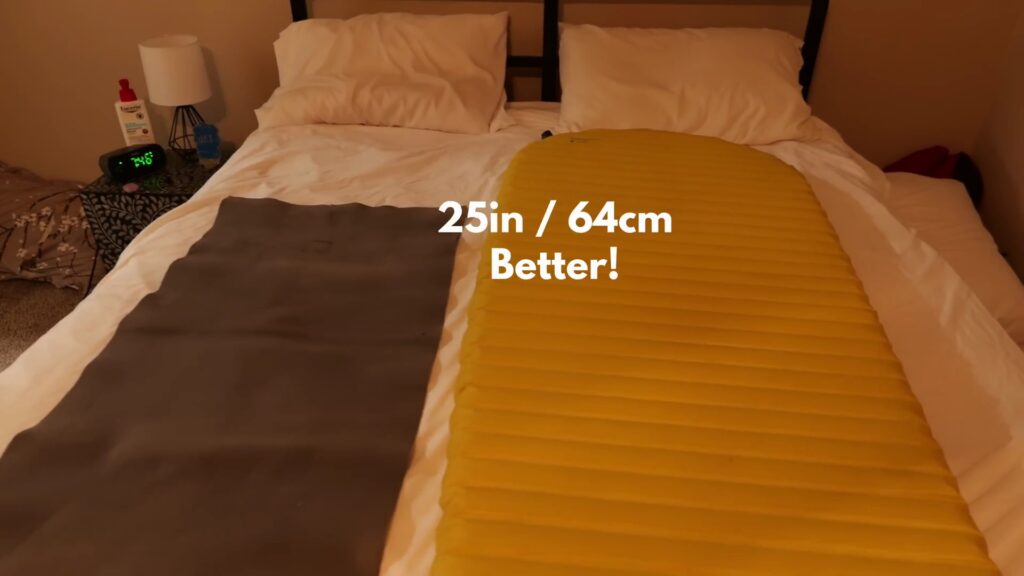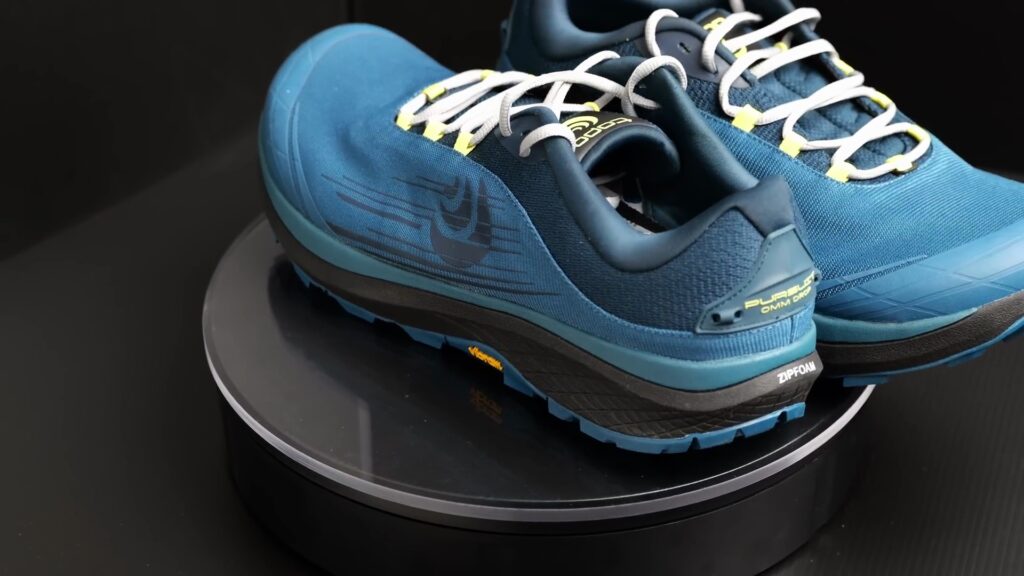Embarking on a backpacking adventure requires meticulous planning and the right gear to ensure comfort, efficiency, and minimal weight. Whether you’re a seasoned hiker or a beginner, this guide will help you optimize your backpacking setup for an unforgettable journey.

Choosing the Perfect Tent: Durstan X-Mid Pro One-Person Tent
Why the Right Tent Matters
Choosing the right tent is crucial for a comfortable night’s sleep in the wilderness. This year, my tent of choice is the Durstan X-Mid Pro one-person tent.

Features and Benefits
- Ample Space: Unlike typical one-person tents, this model offers ample space with 32 inches of width and 90 inches of length, perfect for keeping your gear safe from campsite critters.
- Ventilation: It features two doors for excellent cross ventilation.
- Rain Protection: Extends to the ground to prevent rain splashback.
Considerations
- Wind Resistance: Trekking pole-supported tents like this one may not withstand sustained winds over 30 miles per hour. For open areas, a traditional tent with poles directly supporting the fabric is advisable.
The Ideal Backpack: KS40 from KS Ultralight
Importance of a Lightweight Backpack
A lightweight and efficient backpack is essential for any backpacking trip. Weighing just 16.3 ounces, the KS40 can carry up to 27 pounds of gear.

Features and Benefits
- External Frame Stays: Provides support for heavier loads.
- Cushioning: Half-inch closed-cell foam cushioning for comfort.
- Weight Savings: Unlike heavier models like the Southwest Hyperlite 2400, the KS40 offers significant weight savings, allowing you to carry additional items like extra food or comfort gear.
Sleeping Comfort: Catabatic Palisade Quilt and Therm-a-Rest X-Lite
The Sleeping Quilt: Catabatic Palisade Quilt
A good night’s sleep is vital for a successful backpacking trip. New to my gear list in 2022, the Catabatic Palisade quilt boasts the best pad attachment system I’ve ever used.
Features and Benefits
- Lateral Clips: Limit drafts and keep the quilt securely on the pad.
- Horizontal Baffles: Well-stuffed to prevent down from shifting.
- Fabric: Made with Pertex Quantum fabric, balancing breathability and warmth retention.
Considerations
- Drafts: Drafts at 35 degrees can be an issue, so I might switch to a fully enclosed model like the Nunatak Sastrugi or Feathered Friends Tanager in the future.

The Sleeping Pad: Therm-a-Rest X-Lite
The Therm-a-Rest X-Lite is durable, lightweight, and warm, featuring a patented baffle system that provides excellent insulation.
Features and Benefits
- Width: I prefer the 25-inch wide version for added comfort, as narrower pads often result in restless sleep due to limbs falling off the pad.

Versatile Gear: Gossamer Gear 1/8th Inch Sleeping Pad and Custom Pillow Setup
The Versatile Gossamer Gear 1/8th Inch Sleeping Pad
This pad serves multiple purposes: it cushions my backpack, protects my air pad from rough terrain, adds warmth, and acts as a backup if my air pad leaks. During breaks, it doubles as a seat or a wrap for extra warmth.
The Sleeping Pillow: Custom Setup
A comfortable pillow can make a significant difference in sleep quality. My pillow setup includes the inner of a Nemo Filo Elite Luxury pillow placed inside a green dry bag, which also serves as my pack liner. I stuff it with my down jacket for added softness and wrap it in a buff for a pillowcase. This setup provides a large, comfortable pillow without adding significant weight.

Weather Protection: Rain Gear and Extra Clothing
Rain Gear
Weather can be unpredictable, so having reliable rain gear is essential. For rain protection, I use the Skylite Gear Silnylon Rain Jacket with long pit zips for ventilation. In super rainy areas, I switch to a Gore-Tex Shake-Dry Jacket.

Extra Clothing
- Rain Pants: Mott Bell Versalites, which also provide warmth and mosquito protection.
- Cold Weather Gear: Alpha 60 long johns from Senshi Designs and the Leave Outdoor Alpha 90 hoodie.
- Insulation Layer: The Bora down jacket, which offers excellent warmth with minimal weight.
Footwear and Socks
Footwear
Comfortable footwear is crucial for long hikes. When choosing trail shoes, ensure they fit perfectly out of the box to avoid relying on thick socks for comfort.
Socks
- Sleeping Socks: Alpha 90 socks from Farpoint, which can also be used as makeshift mittens on cold mornings.
- Spare Socks: Thin Njingi liner socks, which dry quickly and prevent overheating.
Food and Water System
Cooking Setup
Proper nutrition and hydration are vital for maintaining energy levels. My cooking setup includes the lightweight BRS 3000 stove and a 600ml Toks ultralight pot.
Food Storage
I use Wallaby mylar bags, which are more odor-proof than traditional options. My spoon is a handcrafted ultralight pear wood model from handmaderecycle.com.
Water Filtration
For water filtration, I rely on the Katadyn BeFree system, which is both light and efficient.
Diddy Bag Essentials
Organization
A well-organized Diddy bag can make a big difference in your backpacking experience. My Diddy bag, a Zpax Cuban model, contains all the small but essential items.
Essential Items
- Headlamp: Nitecore Nu25, which offers enough battery life for night hiking.
- Knife: Renegade Outdoor razor blade knife for food prep and a ferro rod for fire-starting.
- Soap: Dr. Bronner’s soap for hand cleaning.
Essential Hiking Gear: A Comprehensive Guide for Enthusiasts
When it comes to hiking, having the right gear can make all the difference between a memorable adventure and a challenging ordeal. Here’s a rundown of some essential items that I always pack, along with a few tips and tricks from my personal experience.
Lightweight and Durable Storage
First off, I use the Zpax Cuban Diddy bag for storing small gear. It’s incredibly lightweight, comparable to a plastic bag, but durable enough to last for years.
Reliable Illumination
For nighttime hikes, my go-to headlamp is the Nitecore Nu25. It offers sufficient battery life and lumens to keep you going for up to four hours in the dark.

Versatile Cutting Tool
I carry the Renegade Outdoor razor blade knife, which is robust enough to handle tasks like cutting vegetables, sausage, or even an avocado. It also features a ferro rod for starting fires, making it a versatile tool.

Hygiene Essentials
Dr. Bronner’s soap is a must-have for proper hand hygiene. As a medical professional, I can’t stress enough that hand sanitizer won’t clean everything off your hands, so always bring soap. I also use a bamboo kid’s toothbrush for its eco-friendliness and effectiveness.
Fire Starting Tools
Matches and a high-quality lighter are essential. I’ve had lighters fail on me before, so I always carry reliable matches as a backup.
First Aid and Medical Supplies
Leucotape is my go-to for blisters and minor cuts, used in conjunction with sterile gauze. I also carry a small selection of medications, including antidiarrheals, antihistamines, ibuprofen, and aspirin for emergencies.
Sewing Kit
A compact sewing kit with Gooderman 40 thread and a pre-threaded needle is invaluable for quick repairs. Use a spoon as a makeshift thimble if needed.
Shelter Repair
Cuban tape and Tenacious Tape Flex Tape are essential for repairing shelters and sleeping pads. Always carry a larger patch for significant repairs.
Navigation Tools
While I rely mainly on navigation apps, I always carry a compass and paper maps to ensure I know my location at all times.
Power Supply
A 5000mAh battery from lightsmith.com is sufficient to keep my phone charged for four days in airplane mode, ensuring I stay connected when needed.

Clothing for Various Conditions
For cold and rainy conditions, I prefer the Montbell PeakDry Shell Jacket with GORE-TEX ShakeDry. For bug protection, I rely on treated clothing and a sunscreen stick for easy application without dirtying my hands.
Communication and Safety
The Garmin inReach Mini is indispensable for areas with unreliable phone service. It allows for progress tracking, messaging, and emergency rescues.
Comfort and Convenience
A Flextail miniature air pump prevents moisture buildup in my sleeping pad, and the Mac Tech pants offer durability and flexibility. For larger loads, I use the KS Omega backpack, which is customizable and lightweight.
Footwear and Apparel
Topo Athletic Pursuit shoes are my top choice for their wide forefoot, excellent grip, and durability. I pair them with Marmot Juniper shorts and mesh base layers for optimal comfort and cooling.

Sun Protection
The Outdoor Research Echo hoodie is my preferred sun hoodie for its breathability, paired with Sunski Couloir sunglasses for eye protection. A simple trucker hat and a versatile buff complete my outfit.
Conclusion
Embarking on a backpacking or hiking adventure requires careful planning and the right gear to ensure a comfortable and enjoyable experience. From selecting the perfect tent and backpack to ensuring you have the right clothing and safety equipment, every detail matters. By following this comprehensive guide, you’ll be well-prepared for any adventure that comes your way. Happy trails!

